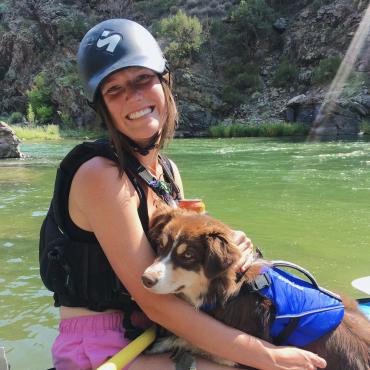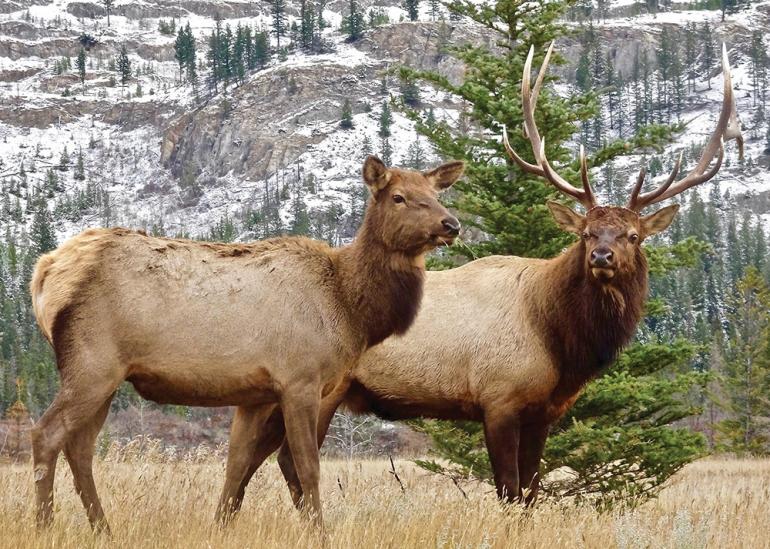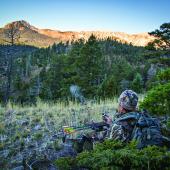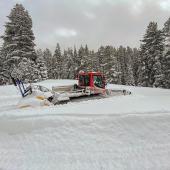Home on the Range
Uncovering the lifecycles of Montana's ungulates
A wide range of ungulates—hoofed mammals such as elk, mule deer, white-tailed deer, moose, bighorn sheep, mountain goats, pronghorn, and bison—call Montana home. But for all of our close encounters—how much do we really know about their lifecycles?
An ungulate’s gestation period is anywhere from six to nine months—about six for deer, eight for elk, and nine for bison. Babies are typically born in late spring or early summer when food supply is abundant. Ungulate newborns are precocial—relatively developed and capable of walking within an hour after their birth. A newborn deer weighs around six to eight pounds, while a newborn elk can tip the scale at 30 or 40.
Wolves, mountain lions, and bears pose serious risks to young ungulates, so mothers will often hide their young in dense vegetation for two to three weeks, returning periodically to nurse them. Once the calves gain strength, the mother-calf pair rejoin the herd often alongside other mothers and babies.
Babies are typically born in late spring or early summer when food supply is abundant. Ungulate newborns are precocial—relatively developed and capable of walking within an hour after their birth.
Though deer and elk calves nurse for several months, they begin nibbling on foliage when they’re only a few weeks old. They stay with their mothers for six to eight months—a critical window for learning and survival. By autumn, these spry, young ungulates have developed the vigor to begin migrating with their herd. Bighorn lambs quickly master rugged cliffs, usually by trailing close behind their mothers. Pronghorn fawns, among the fastest young mammals, rely on speed as their best defense.
Ungulates typically begin breeding within one to three years. Cow elk usually breed at two years of age. During September and October, bull elk in rut will compete for them by fighting and clashing antlers with each other. Mule and white-tailed deer also engage in rutting behaviors, with bucks battling for access to does in late November.
Moose exhibit a similar fall breeding season, but on a more solitary basis, using deep bellows, scent marking, and displays of strength to attract females. Meanwhile, bighorn sheep engage in dramatic head-to-head clashes, using their thick skulls to establish dominance and breeding rights.
All ungulates migrate to some extent in winter. Elk and deer will move to lower elevations in the winter to escape deep snow and find food, then return to higher elevations come summer. Pronghorn either undertake long-distance migrations across open prairies, or remain resident in milder areas, while moose, adapted to deep snow, often remain in wooded areas where food is still accessible—albeit at a slightly lower elevation.
This fall, it’s worth remembering the fleeting, tenuous life cycles of the ungulates we’re pursuing. They’re more than just tags to fill.
Winter survival depends on fat reserves accumulated in the fall. Harsh weather, starvation, and predation take the biggest toll on the young, old, and weak.
Life expectancy varies by species; white-tailed deer usually live six to ten years, while elk and mule deer can reach 15. Moose, bighorn sheep, and bison may live up to 20 years. Still, predators, harsh winters, disease, hunting, and vehicle collisions pose persistent threats.
As these animals reach the later stages of life, their ability to evade predators diminishes, and they eventually succumb to natural causes (or hunter harvest). Their remains, however, provide nourishment for scavengers such as coyotes, wolves, and birds of prey, closing the loop in the circle of life.
This fall, it’s worth remembering the fleeting, tenuous life cycles of the ungulates we’re pursuing. They’re more than just tags to fill. In the same manner that the animals pass on knowledge to their offspring, we can pass on hunting traditions and connections while still maintaining respect and appreciation for the creatures who survive and thrive in the wild lands of Montana.













